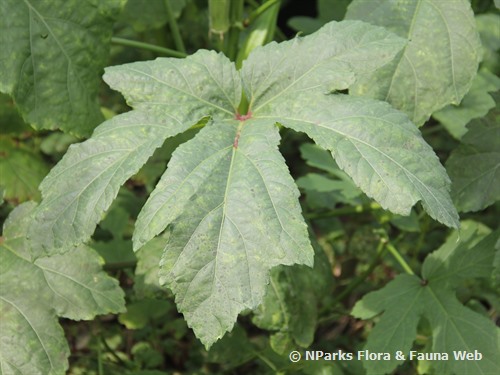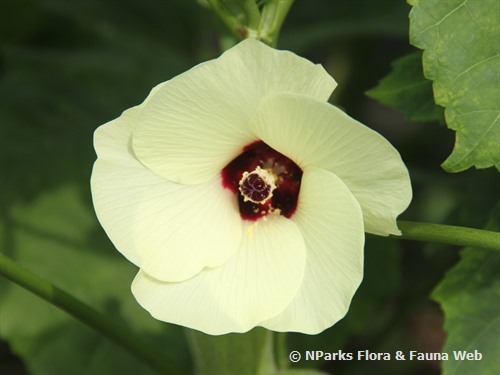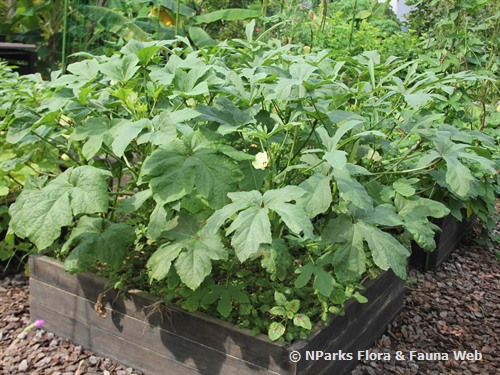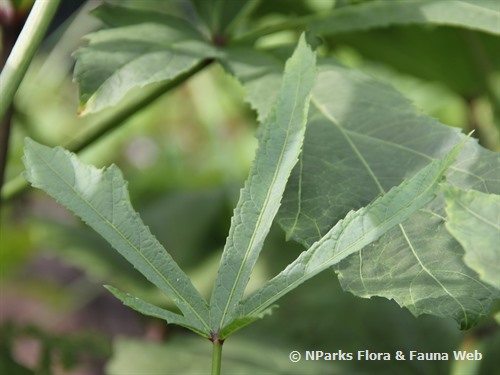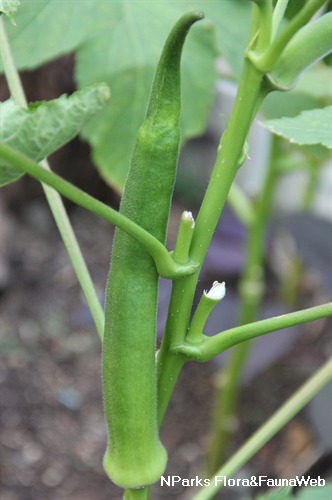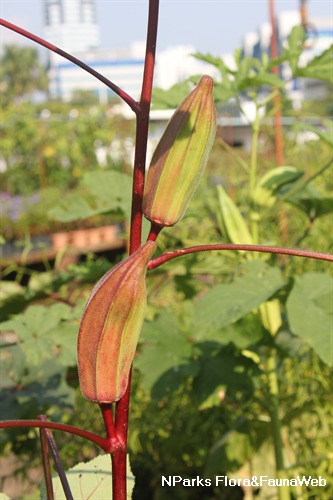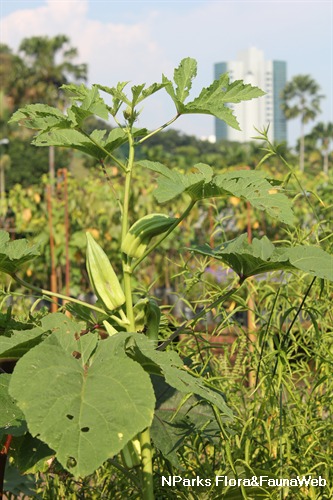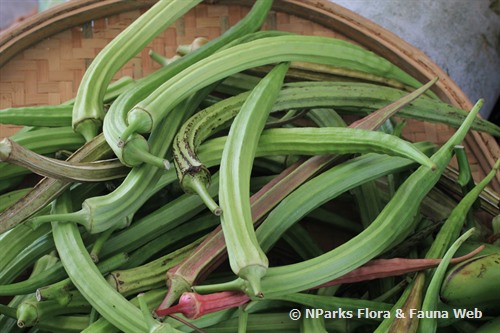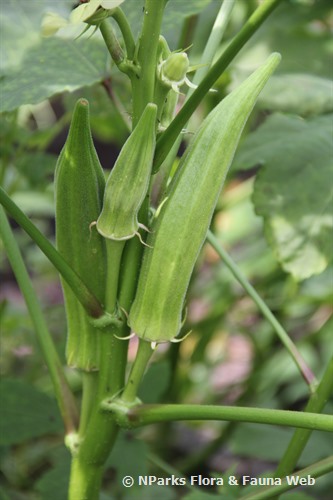
Back
Abelmoschus esculentus 'Clemson Spineless'
| Family Name: | Malvaceae |
| Common Name: | Lady's Finger, Okra |
Name
Classifications and Characteristics
| Plant Division | Angiosperms (Flowering Seed Plants) |
|---|---|
| Plant Growth Form | Herbaceous Plant |
| Lifespan (in Singapore) | Annual |
| Mode of Nutrition | Autotrophic |
Description and Ethnobotany
| Growth Form | Large, mostly herbaceous plant with woody stem near the base up to 1.8 m or more tall. |
|---|---|
| Foliage | Large, palmate leaves are deeply lobed with a toothed leaf margin. |
| Flowers | Cream-coloured, hibiscus-like flowers have a dark red eye. |
| Fruit | The ribbed pods are spineless. |
| Others - Plant Morphology | This cultivar is an All-America Selections winner. |
| Cultivation | Seeds should be sown directly in the soil and thinned to 25 cm apart. The plants are ready for harvest at 50-64 days after planting. Pods should be collected when about 7.5 cm long, as they lose their tenderness when allowed to grow longer. Seeds can be saved from this heirloom cultivar to grow another crop. |
| Ethnobotanical Uses | Edible Plant Parts : Edible Fruits Food (Fruit or Vegetable): This cultivar is often used for soups and stews, but it can also be prepared in a variety of ways. |
Plant Care and Propagation
| Light Preference | Full Sun |
|---|---|
| Water Preference | Moderate Water |
| Propagation Method | Seed |
Foliar
| Foliage Retention | Evergreen |
|---|---|
| Mature Foliage Colour(s) | Green |
| Mature Foliage Texture(s) | Bulging in between Veins |
| Foliar Type | Simple / Unifoliate |
| Foliar Attachment to Stem | Petiolate |
| Foliar Shape(s) | Non-Palm Foliage (Palmate) |
| Foliar Venation | Palmate |
| Foliar Margin | Serrate / Toothed |
| Foliar Apex - Tip | Acute |
| Foliar Base | Auriculate |
Floral (Angiosperm)
| Flower Colour(s) | Cream / Off-White |
|---|---|
| Flower Grouping | Cluster / Inflorescence |
| Flower Location | Terminal |
| Individual Flower Shape | Bowl-shaped |
Image Repository
Others
| Master ID | 33039 |
|---|---|
| Species ID | 7453 |
| Flora Disclaimer | The information in this website has been compiled from reliable sources, such as reference works on medicinal plants. It is not a substitute for medical advice or treatment and NParks does not purport to provide any medical advice. Readers should always consult his/her physician before using or consuming a plant for medicinal purposes. |

